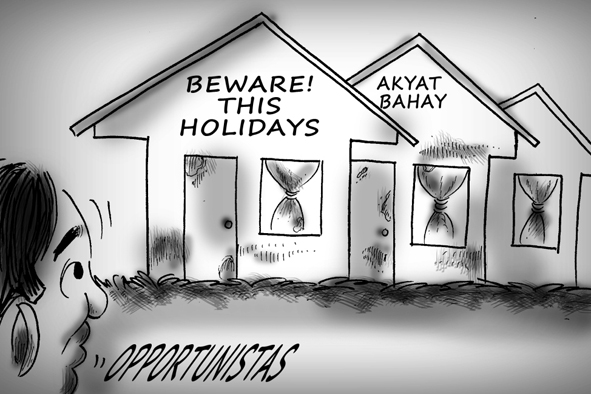
[av_one_full first min_height=” vertical_alignment=” space=” custom_margin=” margin=’0px’ padding=’0px’ border=” border_color=” radius=’0px’ background_color=” src=” background_position=’top left’ background_repeat=’no-repeat’ animation=”]
[av_heading heading=’EDITORIAL’ tag=’h3′ style=’blockquote modern-quote’ size=” subheading_active=’subheading_below’ subheading_size=’15’ padding=’10’ color=” custom_font=” av-medium-font-size-title=” av-small-font-size-title=” av-mini-font-size-title=” av-medium-font-size=” av-small-font-size=” av-mini-font-size=” admin_preview_bg=”][/av_heading]
[av_textblock size=” font_color=” color=” av-medium-font-size=” av-small-font-size=” av-mini-font-size=” admin_preview_bg=”]
Ready all the time
TROPICAL storm Urduja is primarily pummeling Eastern Visayas but Northern Iloilo, Capiz and Aklan in Western Visayas are affected too, according to the state weather bureau.
As it continues to threaten nearby areas, we remind all local government units (LGUs) in the storm’s path to ensure that timely information relayed to the people.
Local officials, including those in the barangays, should have already conducted an information dissemination campaign on the strength of the typhoon and its effects, including an expected storm surge, and the community evacuation plan. Every barangay should have informed citizens of possible landslides, flooding and storm surge, and those in high-risk areas should have already been evacuated to safe places.
We should all be on heightened alert. We remind LGUs to ensure that no families are living in high-risk areas, release frequently updated advisories and ensure that areas expected to be affected are prepared — activate all forms of early warning systems, set up evacuation centers, evacuate families living in landslide-prone and flood-prone areas.
LGUs may even implement forced evacuation when called for. Shelters for evacuees should be well designed, built strong, and prepared ahead of time with emergency supplies of food, water, medicine, shelter, and toiletries, while government agencies are ready to augment the basic needs of evacuees.
Moreover, local disaster risk reduction and management officers should be alert. Quick communication and real-time updates are vital in ensuring effective disaster response with first responders and search and rescue teams ready for dispatch anytime.
Let us find a way to prevent damages to critical infrastructure such as transmission lines because electricity and communication lines are more important in the aftermath of disasters.
Yes, communities must heed disaster warnings to avoid accidents. When warned of an impending hazard, we should take safety measures. Stay indoors and do not attempt to go out especially at the height of the typhoon to avoid accidents.
National and local action must promote disaster prevention with “zero casualty” as a mindset and approach. On the other hand, citizens must do their part by paying attention to government warnings and community advisories.
[/av_textblock]
[/av_one_full]



